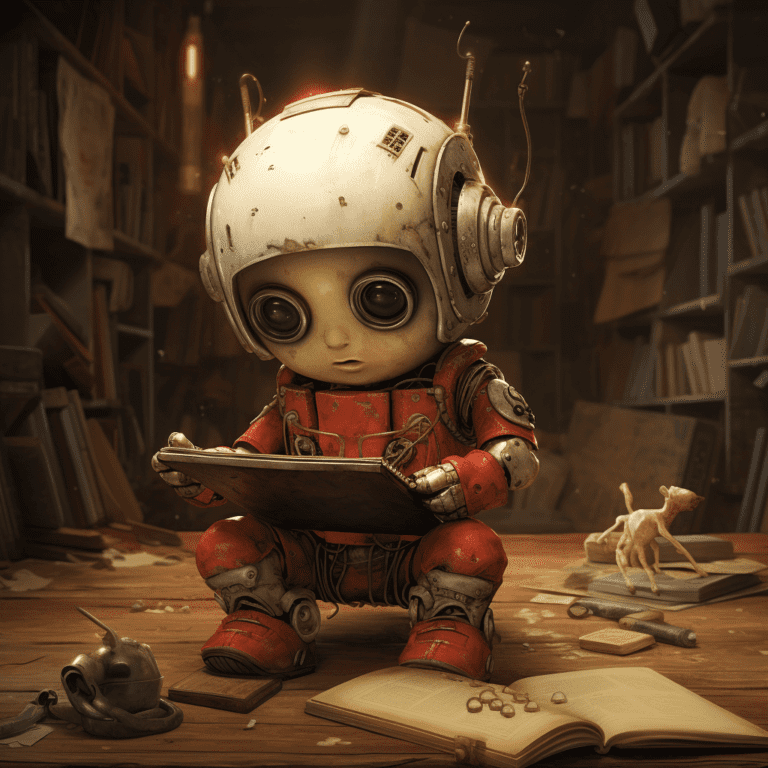AI in Simple Terms

Introduction
Imagine having a personal assistant that never gets tired, can sift through mountains of information in seconds, and learns how to better serve you every single day. That’s not science fiction; it’s Artificial Intelligence, often simply known as AI. In recent years, AI has been the talk of the town, with companies pouring billions into research and development. It’s like a gold rush, but instead of gold, it’s intelligence – artificial intelligence!
But what exactly is AI? Why is everyone so excited about it? And how does it affect our daily lives? In this article, we’ll break down the world of AI into bite-sized pieces that anyone can understand. No need for a PhD in computer science, just bring your curiosity!
Here’s a sneak peek of what we’ll be exploring:
- Unraveling the mystery behind what AI really is
- The secret sauce of AI: how it learns and thinks
- What sets AI apart from the apps and software you already use
- Why AI hasn’t taken over the world (yet)
- The good, the bad, and the unknown: weighing the pros and cons of AI
So, buckle up as we take a journey into the fascinating world of artificial intelligence, and let’s make sense of all the buzz in simple terms!
Now, let’s dive into the heart of AI and start unraveling its mysteries.
Peeling Back the Layers of Artificial Intelligence
Artificial Intelligence Demystified: A Friendly Whiz Kid
Let’s kick things off by breaking down what artificial intelligence really means. Imagine a whiz kid who can solve math problems in seconds, learn new languages overnight, and even beat grandmasters at chess. Now, imagine all that brainpower packed into a computer program. That, my friends, is Artificial Intelligence (AI) in its essence. It’s like having a brainiac buddy, but in digital form. The world is abuzz with AI, and for a good reason. From self-driving cars to voice assistants, AI is revolutionizing how we live and work.
The Secret Sauce: AI’s Pattern Wizardry and Learning Prowess
“The essence of knowledge is, having it, to apply it.” – Confucius
AI’s real magic lies in its pattern recognition and learning abilities. It’s like a detective who can spot clues and solve mysteries at superhuman speed. Here’s how it works:
- AI goes through a phase called training. Think of it as a student cramming for exams.
- During training, AI is fed tons of examples, like photos of cats and dogs.
- It then uses neural networks (inspired by our brain’s structure) to analyze these examples and spot patterns.
In simple terms, AI is like a sponge soaking up information and then using that knowledge to make smart decisions.
AI vs. Old-School Software: The Evolving Genius

Now, you might be wondering, “What makes AI different from the apps and software I’ve been using all this time?” Well, let me tell you:
- Learning from Experience: Traditional software is like a robot, blindly following instructions. AI, on the other hand, learns from data and experience, much like humans do.
- Adaptability: AI can adapt and evolve. It’s like a chameleon, changing and improving as it encounters new data.
In essence, AI is not just another program; it’s an evolving genius that learns and adapts. It’s like comparing a bicycle to a rocket ship!
So, there you have it. We’ve peeled back the layers of AI, from its brainy capabilities to its learning prowess and adaptability. But hold on, we’re just getting started. There’s a whole universe of AI wonders waiting to be explored. So, buckle up, and let’s dive deeper into the fascinating world of Artificial Intelligence.
The Roadblocks: What Kept AI from Becoming Our Overlord Sooner?

The Hurdles in AI’s Marathon to Dominance
AI, with all its brilliance, faced a rocky road to stardom. Imagine a genius trapped in a world without the right tools. That was AI a few decades ago. Here’s why AI didn’t take over sooner:
- Computing Power: AI’s brain needed a gym, and early computers were like treadmills stuck on the lowest setting.
- Data Drought: AI thrives on data. Back then, data was like a rare delicacy, not the all-you-can-eat buffet it is today.
- Funding Famine: Money makes the world go round, and AI’s world was spinning slowly due to a lack of investments.
But, like a phoenix, AI rose from the ashes as technology evolved. Now, it’s soaring through the skies of innovation.
Weighing the Scales: The Good, The Bad, and The AI
The Bounty of AI: A Cornucopia of Benefits
AI is like a treasure chest filled with golden opportunities. Here are some of the riches it brings:
- Efficiency: AI is the ultimate multitasker, juggling a million tasks at once without breaking a sweat.
- Precision: With AI, errors are as rare as unicorns. It’s like having a surgeon with a laser-guided scalpel.
- Automation: AI takes care of the mundane, leaving humans free to chase rainbows and dreams.
The Shadows: AI’s Dark Side
However, every rose has its thorns. Here are some concerns:
- Job Displacement: AI might take over certain jobs, leaving humans in the dust.
- Ethical Quandaries: From biases to privacy, AI’s brain can sometimes be a Pandora’s box of dilemmas.
Wrapping It Up: AI’s Journey and What Lies Beyond
We’ve traveled through the realms of AI, from its brainy brilliance to its challenges and the treasures it holds. As we peer into the future, AI promises to be a compass guiding us through uncharted territories. The key is to embrace its potential while navigating its challenges with wisdom and foresight.
Prefer to listen? Tune into the podcast version of this post below!
Frequently Asked Questions (FAQ)
What is AI basically?
AI, or Artificial Intelligence, is like a computer program with a brain. It can learn, adapt, and make decisions, much like humans.
What exactly is AI and how does it work?
AI works by analyzing data, spotting patterns, and making decisions based on that information. It’s like a detective solving mysteries at lightning speed.
What is truly AI?
True AI can learn from experience, adapt to new data, and perform tasks that typically require human intelligence.
What is the most powerful AI in existence?
As of now, there are several powerful AIs, like OpenAI’s GPT-3, which is known for its ability to understand and generate human-like text.
Is AI actually real?
Yes, AI is very real! It’s being used in everything from smartphones to self-driving cars.
Is AI actually intelligent?
AI is intelligent in the sense that it can analyze data and make decisions, but it doesn’t have consciousness or emotions like humans.
Will AI overtake humans?
AI is a tool created by humans. Whether it overtakes humans depends on how we use and control it.
What is the fear of AI called?
The fear of AI is called “AI anxiety” or “technophobia.” It’s the worry that AI might become too powerful and uncontrollable.
What did AI say about humans?
AI doesn’t have opinions like humans. However, some AI programs have been trained to mimic human conversation and can generate responses based on data.
What is the AI takeover theory?
The AI takeover theory is the idea that AI could become so advanced that it might take control over society, making decisions without human intervention.
Who created AI?
AI is the result of decades of research by countless scientists and engineers. Alan Turing is often considered one of the founding fathers of AI.
What is artificial intelligence in simple terms?
Artificial intelligence is like a computer program that can think and learn, almost like a human brain.
What is AI in a simple sentence?
AI is a smart computer program that can learn and make decisions.
How do you explain AI to a child?
Imagine if your toy robot could learn to play new games, solve puzzles, and even do homework just by watching and learning – that’s what AI can do!
What is the easiest way to explain AI?
AI is like a computer brain that learns from information and can make smart choices based on what it learns.
How do you explain AI to a 10-year-old?
AI is like having a super-smart friend in your computer who can help you solve problems and learn new things really fast.
What is AI explained to a 5-year-old?
AI is like magic in computers that helps them think and learn like people do!
Why do we need AI in simple words?
We need AI to help us do things faster, make fewer mistakes, and take care of boring tasks so we can have more fun!
What is an example of artificial intelligence for kids?
A talking robot or a game that learns how you play and gets better at playing against you is an example of AI.
How do you teach AI to kids?
You can teach AI to kids by using simple games and apps that let them see how computers can learn and solve problems.
What are the examples of AI?
Examples of AI include Siri on iPhones, self-driving cars, and programs that can beat humans at chess.
What is the main goal of AI?
The main goal of AI is to create computer systems that can solve problems and perform tasks that usually require human intelligence.
What are the pros and cons of AI?
Pros of AI include speed, efficiency, and accuracy. Cons include job displacement and ethical concerns.






